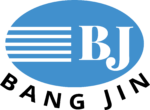Drains are mostly used to consolidate vast regions of loading, like as reservoirs, runways at airports, and big storage areas. In combination with driving piles in soft clayey soils is another significant use.
The drain drains the significant rise in interstitial pressure produced while driving, removing any risk to already-placed piles.
Sand Drains
These entail digging a vertical shaft and filling it with graded sand to serve as a filter. The methods presently being used and selected by The rising water flow carry the excavated material to the surface in suspension while also keeping the shaft open until it is filled with sand.
Highly compressible soils and soft marine clay deposits result in very massive consolidation settlements that can seriously damage or even destroy buildings built on top of them. Such soils may be found in coastal areas and they can reach great depths of up to 15 to 25 meters or more. It’s possible that in these circumstances, pile foundations are not always the best option.
Such soil layers have such a fragile surfaces that it is challenging to build structures on top of them with heavy machinery. If conventional foundation procedures are utilized in such soils, construction work is sometimes slowed down or stopped for many weeks, driving increasing project expenses.
To create a solid platform for building and to reduce differential settlements, compacted embankments are typically built over such soils. Accelerating consolidation would be the optimal response to this kind of issue, ensuring that any possible settlements are finished prior to building the facility.
Construction of buildings atop extremely compressible soils, such as airports, sea ports, harbor works, highway or railway embankments, or dams, can be successfully accomplished using vertical sand drains. Sand drains work on the premise of adding extra vertical drainage faces in the form of sand-filled, cylinder-shaped holes.
Advantages and Disadvantages of Sand Drains
Utilizing sand drains has the following benefits:
- Sand drains allow pore water to be drained not just in a vertical direction but also in a circular manner.
- In comparison to traditional soil systems, the pace of consolidation becomes noticeably faster since the conductivity of soil in the horizontal direction is often several times greater than that in the vertical motion.
- Speedier consolidation increases the soil’s strength properties quickly, allowing for faster development and a consequent drop in project cost.
- Due to the fact that the majority of possible settlements are fixed before or during construction, the structure’s protracted stability is also greatly improved.
- With sand drains, possible issues when building in soft, compressible soils are avoided.
Such soil layers have a such fragile surface that it is challenging to build structures on top of them with heavy machinery. If conventional foundation procedures are utilized in such soils, construction work is sometimes slowed down or stopped for many weeks, driving increasing project expenses.

Wick Drains
The goal of Prefabricated Vertical Drains (PVDs), sometimes known as “Wick Drains,” is to speed up the consolidation of slow-draining soils. They are made of a plastic core surrounded by a geotextile. To speed up the consolidation of preconstruction soil, they are often used in conjunction with surcharging.
By adding a temporary load to the ground that produces stress that is often comparable to or larger in size than the expected design stresses, soft soils can be pre-loaded through the process of surcharging.
Initially, the surcharge will raise pore water pressures; but, with time, the water will drain away and the soil cavities will close up. In order to decrease the amount of time needed for preloading, these prefabricated wick drains are employed to cut the pore water travel distance. The primary settlement will move more quickly.
Pore water won’t flow vertically to a drainage layer below or above it; instead, it will flow laterally to the nearest drain. Because of the pressures created in the pore water, the drain flow occurs.
Advantages of Wick Drains
These are the following benefits you get from wick drains:
- decrease in the total amount of time needed to finish primary consolidation as a result of preloading
- Reduce the amount of surcharge necessary to complete the appropriate amount of confining pressure in the allotted period of time.
- When stability is in question, accelerate the pace at which strength is gained through the consolidation of soft soils.
Researchers have found some technical advantages of wick drains compared to sand drains. By sand drain type, they categorize these benefits. There are two types of drains: displacement drains, which move the soil as they are installed, and non-displacement drains, which do not move the soil as they are installed. They discovered the following benefits of wick drains:
Displacement:
- lower physical displacement caused by the mandrel and top, and often static push rather than drive, cohesive soils are far less disturbed during installation.
- On-site installation equipment is often lighter and more mobile.
- don’t require a plentiful supply of water for spraying
Non-displacement:
- less integrated environmental issues; do not require the control, processing, and disposal of discharged spoil materials
- field monitoring and control are not as crucial
- There is definitely room for cost savings.
- remove issues with quality control, truck traffic, and the cost of sand-backfilling drains
- As a result of the streamlined installation processes, joint control and inspection needs are decreased.
General:
- improved guarantee of a continuous, permanent vertical drainage route; no breaks brought on by installation issues
- Wick drains can endure significant lateral displacement or buckle due to soil movement in either a vertical or horizontal plane.
- possibly quicker installation pace
- It is feasible to build wick drains at close intervals if extremely quick consolidation is required.
- Wick drains are more simply installed when they are put underwater and not vertically.
In general, it is believed that wick drains should be employed in all soils that compress extremely slowly when subjected to natural drainage conditions because of the poor soil conductivity and the comparatively large spacing between natural drainage borders.
For all soil types and geological circumstances, wick drains are not, however, adaptable. Any soil that is moderate to extremely compressible under static stress can use the drains.
Based on the advantages and disadvantages you need to decide on which drain system will be appropriate for your work.

